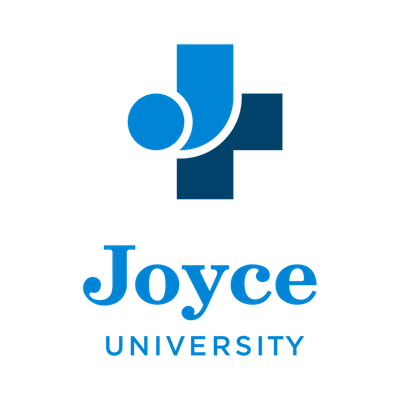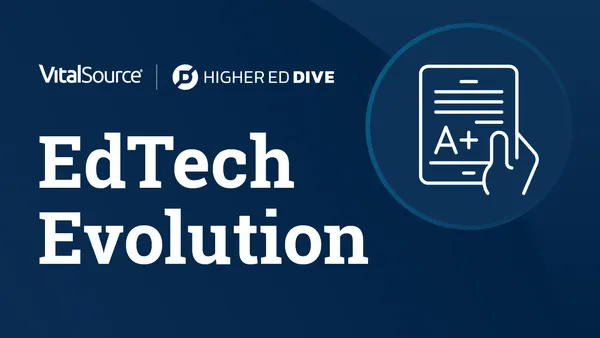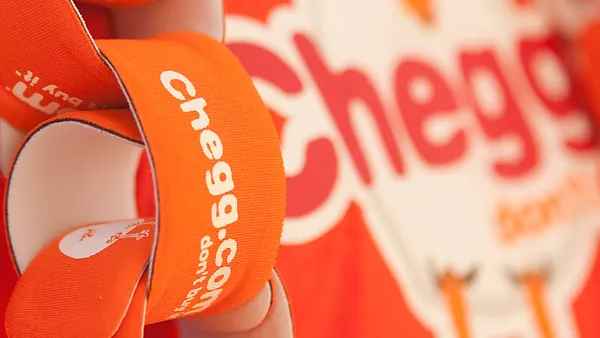Blackboard made headlines in July with its entry into the MOOC market via a new platform that combines elements of Blackboard Learn, Collaborate, Connect, Mobile, xpLor, and CourseSites, which was used for MOOCs as far back as Spring 2012. Since then, competitor Desire2Learn has also announced a MOOC platform, in addition to Instructure's Canvas platform, which launched in November 2012.

Naturally, all of this has led to speculation that the LMS and MOOC markets are converging, and deals like the one struck between Coursera and Antioch University have only fueled talk of a narrowing gap between the two. CourseSites, however, as Blackboard Director of Product Management & CourseSites Jarl Jonas says, has been part of Blackboard since the company's inception. MOOCs are just the next stage of the product's evolution, as it streamlines several other Blackboard offerings with it.
Education Dive caught up with Jonas Tuesday at Educause, where he clued us in on the ed tech giant's vision for MOOCs and what the next stage of CourseSites' evolution might look like.
EDUCATION DIVE: How did CourseSites get to where it is today?
JARL JONAS: We’ve been working with clients probably a little over a year now—not necessarily quietly, but really stepping back from the whole MOOC hype. We were able to leverage CourseSites as a way to experiment with them in terms of being able to provide open learning experiences. When we stuck our toe in the water, our clients came to us and said, “Can we do this on CourseSites, as well? We want to see what this is all about.” They weren't necessarily invited to the other consortiums, or they didn’t necessarily want to expend that much effort knowing that this was still a grand experiment. So, in doing so, we’ve probably spoken to well over 100 clients, as well as worked with, now, dozens of clients who are offering MOOCs on CourseSites—and in very different flavors. From that, we learned that we should basically be supporting clients with a dedicated MOOC platform, because CourseSites is a great start, but it really is a good place for us to help clients with change management about where the Learn platform and other technologies are going, pretty much out of the box.
CourseSites has always been around with Blackboard, almost since the inception. I was at New York University, and I used it then, as well, as their director of distance learning—just to see what Blackboard was all about and where they were going. It used to have a trial basis to it, where you could sign up and have 30 days to try it, and afterwards, it would be on a per course, per year basis for instructors. Three years ago, we decided to really create much more transparency to the technology to allow both teachers who might not have access to any technology, as a kind of community program, but also to allow our clients to have much more visibility into where our platform was going, because we started to expedite our innovation and release progress from that point. So CourseSites, three years ago, became this open platform that gave everyone access to our technology at no cost. My colleague [Sarah Bishop-Root, senior manager of CourseSites/MOOCs] and I, who come from the education space, were the ones who said, “Hey, access to technology is great, but can we leverage this as a learning platform, as well, to teach teachers how to better leverage technology—Blackboard or otherwise—in their classroom?” So one of our first MOOCs, we ran on CourseSites, and from that point forward, it was May of last year, clients started coming to us. Every quarter, we’ve offered a MOOC, including one that we just ran on badging with Mozilla that just ended this week.
How many institutions are currently involved? What have you seen them do that really sticks out to you?
JONAS: We have about, if I remember correctly, 24 or 25 institutions on our course catalog with about 40 courses. A few are just running one, and a few are running up to five. I think that’s the highest number. Some of the most recent additions and most interesting are ones like University of Pittsburgh. What they’re trying to do is run a graduate seminar on Isocrates in their department of communications, and as part of the seminar, the students are being bridged both from their matriculated programs and helping to connect with students in the open course. They’re keeping it somewhat limited because it is an experiment of sorts, but they’re really using it as an instructional tool for the graduate students, who then have to teach portions of the MOOC. From an instructional strategy, if you teach something, you’re probably going to remember it the most. So they’re also being honed perhaps to go ahead and remember that information, but that requires them to do a lot more research and independent inquiry, so that’s an interesting one there.
Syracuse University is running their second MOOC with us. They’re doing one for their information school, mainly geared toward their librarian programs, and their first MOOC was quite a success. They got started on their own, which was exactly what we wanted. We didn’t want to get involved or really dictate any process. Their first one, they’ve actually told us they’ve seen some matriculations as a result of the MOOC, so they’re running a second one, as well. This one, I think, is related more towards their sports management programs.
How are Blackboard’s MOOC offerings different from platforms like EdX or Coursera or Udacity?
JONAS: First and foremost, the biggest difference is that we’re offering it at no cost. It is offered to our clients, but they're clients on any of our platforms. That’s thousands of institutions across the world. They’re able to go ahead and try out the platform with really not much investment on their part in terms of financial investment. We’re not asking for any revenue sharing at all. They’re allowed to create as many courses as they like, and to have as many students in those courses as they like. I think, if we compare the platforms as well, what we’ve seen is our platform does encourage a lot more engagement because we have a lot more social learning tools embedded. We have mobile capabilities embedded for increased access. They’re really comfortable with the platform because they’re usually familiar with it. Even as we’ve advanced quite a bit over the last couple of years, they like those innovations and it really helps students to get engaged with one another, and also for the instructor to be engaged with the participants, as well.
We want them to be in full control of the process. When I say we’ve learned a lot from having them run it on CourseSites, there were institutions like Florida International University, who we learned later, after they told us, were running MOOCs. They set up their own marketing plan and Web site and were connecting it to our platform, again, without much involvement from us. We wanted to know and learn how they were having some success, but we want them to be in full control. The flexibility of Learn gives them the ability to target any level of student with any type of learning, whether it be open, for them to actually provide credit or certification or badging, or just an experimentation. It’s pretty flexible. We definitely let them keep control over their own content and without having any costs or fees associated with it.
If you look at what it really takes to put together a MOOC for the clients who are doing so, even though it might be somewhat experimental, they still want to put their best foot out there. They’re representing themselves and, for the most part, want students to be attracted to the relevant programs. So they’re going to put a lot of investment into the actual learning experience and content and facilitation, so why not just add that value onto the contracts and relationships we already have with them?
Do you see the LMS and MOOC markets converging?
JONAS: I think it’s still too early to say that. I follow Daphne from Coursera, and I see kind of how her business model has evolved over the course of time. She’s starting to partner with more and more institutions, whether it be to get more money or just to experiment further, but I think there’s always going to be the value of having an embedded LMS within the institution. We have clients who run a course on CourseSites and will try out other platforms because they need to see what works best for themselves, the students that they serve and the faculty they’re working with. But what we really did was take a step back. We didn’t really jump into the deep end, we said, “Hey, where’s this going to go in 10 years?” I asked myself and my colleagues and our clients, “What if every single institution offers MOOCs in 10 years? Where are we going to be then? How different is that now, with how you’re all trying to differentiate yourselves from an on-campus learning experience?”
There are all these new alternative methods and pathways to education that they’re having to concern themselves with, as well as retention and how we serve the media age. So let’s go ahead and provide them with a platform so we can all learn together about what it means to perhaps educate at scale. At Penn State, I sat in a room with 800 students in my Psychology 101 class. Do I want to do that same thing in an online program, just listening to lectures? That wasn’t very engaging for me, and I’m not sure it’s going to be engaging for everyone else. So how can we go ahead an make sure we learn from all of this and make sure we learn from this to give the clients the tools they need to scale education, but make it quality and engaging at the same time?
As more LMS platforms offer their own MOOC solutions now, how is Blackboard planning to differentiate itself?
JONAS: I think imitation is somewhat the best form of flattery, seeing what has come out recently in terms of those offerings. One of our biggest differentiators is mobile access, knowing that students are accessing information quite a bit on their mobile devices rather than on their computer. You’ll see some innovation there—not only in the learning platform, but in the MOOC platform, as well. But also, again, just really partnering with clients in this process, in this grand experiment, and learning from that, and seeing what they need. If we learn from that, does it make sense to put it in our enterprise LMS, does it make sense to keep it separate, or, perhaps, do we retire it, if it goes away all together?
With CourseSites, it wasn’t only Blackboard Learn. It was aspects of Blackboard Collaborate and Blackboard Mobile and Blackboard Connect. It came together for the teachers in pretty much a seamless way. My colleague and I called it the “One Learning Landscape.” I think that’s perhaps a differentiator, too, in giving them the retention monitoring tools and the recording tools, particularly to the teachers and instructional designers so they continue to enhance the instruction and design of the courses.
What are the biggest developments in the works for Blackboard’s MOOC offerings?
JONAS: I would say continuing on that self-service model is really putting further control into the clients’ hands. It’s going ahead and allowing them to extend their brands, to represent themselves in the best way possible on our MOOC platform, with us taking a little bit of a backseat knowing that we are powering those experiences, but letting them shine. I think that’s really a big emphasis of what you’ll see when we launch the platform, but then also, again, bringing all the platforms together in a seamless way so they can go ahead and build a flexible learning experience, whether it be, “I want to design an open orientation for our freshmen and see if anybody else wants to also comment on how it works and share that material,” or, “I have a grant and I want to experiment what this is all about and teach at scale and work with Blackboard to obtain the learning analytics to do so,” or, “I’m going to showcase my institution and I really want to recruit students into this program.” For example, Temple just recently launched a quantitative analytics course with the specific motivation of trying to get students into their MBA program. So, working with clients not only from the MOOC perspective, but helping them institution-wide, what is it that may or may not be going on? And can they leverage not only our MOOC platform, but perhaps other expertise that we have in the company, as well?
Would you like to see more education news like this in your inbox on a daily basis? Subscribe to our Education Dive email newsletter! You may also want to read Education Dive's look at 5 professors on YouTube who nailed teaching.




















